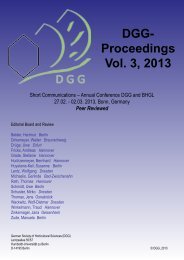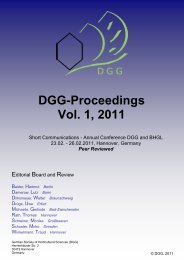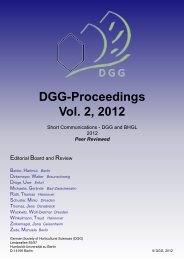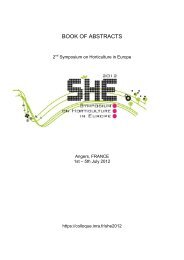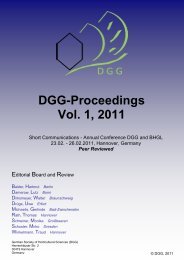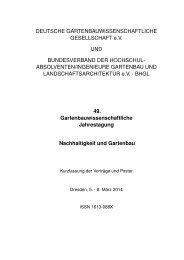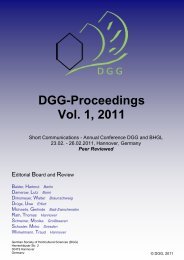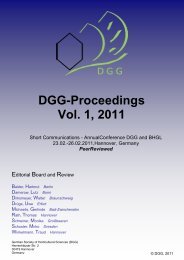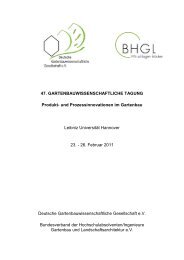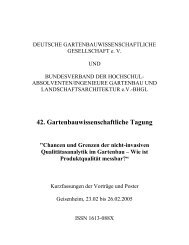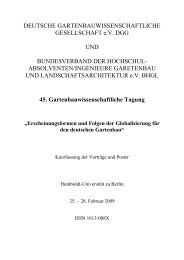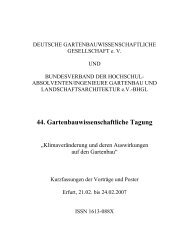43. Gartenbauwissenschaftliche Tagung - (DGG) und des
43. Gartenbauwissenschaftliche Tagung - (DGG) und des
43. Gartenbauwissenschaftliche Tagung - (DGG) und des
Sie wollen auch ein ePaper? Erhöhen Sie die Reichweite Ihrer Titel.
YUMPU macht aus Druck-PDFs automatisch weboptimierte ePaper, die Google liebt.
Gemüsebau<br />
Nutritional aspects of tomato as affected by cultivar and processing<br />
method<br />
A. Gonzalez Rivero, A.J. Keutgen and E. Pawelzik<br />
University of Göttingen, Department of Crop Sciences, Quality of Plant Products,<br />
Carl-Sprengel-Weg 1, 37075 Goettingen<br />
anniagr76@yahoo.es<br />
Tomato is among the most widely consumed vegetables worldwide and an important source<br />
of certain antioxidants, including lycopene, ß-caroten, and ascorbic acid, not only for their<br />
content but also for their year-ro<strong>und</strong> availability and high utility possibilities. An insight into<br />
various antioxidant components of different tomato cultivars after processing would help to<br />
define their quality and contribution to the human health.<br />
The aim of this study was to investigate the variations in the contents of different antioxidants,<br />
such as lycopene, ascorbic acid, phenolics and their contribution to the antioxidant<br />
activity in four selected tomato genotypes. These differ in colour, size and shape, and belong<br />
to the most cultivated in Europe and Middle of America. Furthermore the nutritional stability<br />
of tomato products was assesed after the different processing methods as freezing, production<br />
of ketchup and puree, to verify the actual contribution to the human health.<br />
Significant differences were fo<strong>und</strong> between lycopene, ascorbic acid, total phenolic content<br />
and antioxidant capacity among the various genotypes and processing methods. The tomato<br />
cv. Suso F1 showed the highest and most stable antioxidant properties like phenolic compo<strong>und</strong>s,<br />
lycopene and antioxidative capacity. The yellow tomato cv. Goldene Königin follows<br />
cv. Suso, in spite of very low content of lycopene, contained a higher amount of phenolic<br />
compo<strong>und</strong>s, ascorbic acid and the highest antioxidative capacity. The most frequently<br />
used tomato cultivars for processing like Campbell and Roma showed lower content of antioxidant<br />
capacity compared to cvs Suso and Goldene Königin. The processing methods affected<br />
the antioxidant content. Antioxidant capacity and phenolic compo<strong>und</strong>s decreased with<br />
processing level. Lycopene and ascorbic acid content remained on the same level as a result<br />
of concentration during the processing and the reduction by heating.<br />
BHGL – <strong>Tagung</strong>sband 24/2006<br />
201



